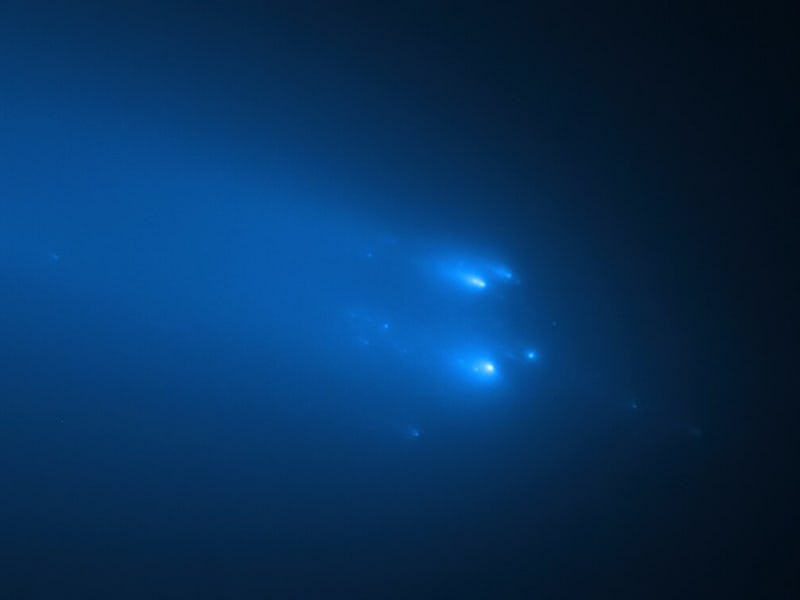Comet disintegration looks like bioluminescent sea creatures in this soothing video
Scientists had high hopes for this comet, but it cracked under pressure.

On December 28, 2019, astronomers in Hawaii discovered a comet on its way to the inner Solar System. As Comet C/2019 Y4 (ATLAS) approached Earth, scientists predicted that it would increase in brightness until it gave us a spectacular show in the night sky that may even be visible to the naked eye.
Sky gazers were clenching their binoculars, waiting anxiously for what would be the brightest light show they have seen in a while. But much to their disappointment, it ended in a nasty breakup.
Comet ATLAS broke apart, disintegrating into smaller fragments, along with people's dreams of seeing a bright, visible comet float through the skies. However, new images obtained by the Hubble Space Telescope reveal the breakup of the comet in the sharpest detail, giving us an unprecedented view of a comet disintegration.
In the video, fragments of the comet can be seen lit up like space fairies, or appearing similar to bioluminescent sea creatures swimming through the cosmic ocean. The comet's fragments are actually enveloped in a tail of cometary dust that's glistening in the sunlight.
"This is really exciting — both because such events are super cool to watch and because they do not happen very often," Quanzhi Ye, a researcher at the University of Maryland, College Park, who led one of two teams behind the observations, says in a statement. "Most comets that fragment are too dim to see. Events at such scale only happen once or twice a decade."
Hubble identified about 30 fragments of the comet on April 20, and another 25 fragments on April 23. The comet's fragments were located around 91 million miles away from Earth.
A side-by-side view of Hubble's observation on April 20 and April 23.
However, scientists were surprised to see that the appearance of the fragments seemed to have changed over the course of three days.
"I don't know whether this is because the individual pieces are flashing on and off as they reflect sunlight, acting like twinkling lights on a Christmas tree, or because different fragments appear on different days," David Jewitt, professor of planetary science and astronomy at University of California, Los Angeles, who led the second team behind the observations, says in a statement.
Comet ATLAS has been quite erratic since the day it was discovered. When it was first observed, the comet was quite faint. But then it began brightening at a rate of 0.25 magnitude every day as it made its way closer to the Sun.
However, the comet suddenly started getting dimmer, decreasing in brightness from a magnitude of 8 to a magnitude of around 9.2 in early April (the higher the number, the less bright the object is). The abrupt dimming of the comet led some scientists to worry that it was indeed breaking apart, and breaking up with Earth before its scheduled date with the planet.
Finally, on April 11, amateur astronomer Jose de Queiroz confirmed that the comet disintegrated after photographing three fragments of the comet that had broken off.
Why do comets break apart? Comets are icy bodies of frozen gas, rock and dust, material that likely dates back to the formation of the Solar System.
As comets travel closer to the Sun, they increase in brightness. Heat from the star causes them to burn, which in turn causes a glow. However, not all comets survive the journey. The Sun's powerful gravity can weaken them, breaking them apart as they draw near. It's possible for comets to come very close to the Sun, even within a few thousand miles. They're called sungazers, and as NASA notes, "many sungrazers do not survive their trip around the sun."
Comet ATLAS was scheduled for a heated rendezvous with the Sun on May 23, where it would have been as close as about 72 million miles to the star, that’s closer than planet Mercury is to the Sun.
And sure enough, if some of those smaller fragments survive, then they will also fly by close the Sun on that day, although their encounter won't be as impressive as some were hoping.